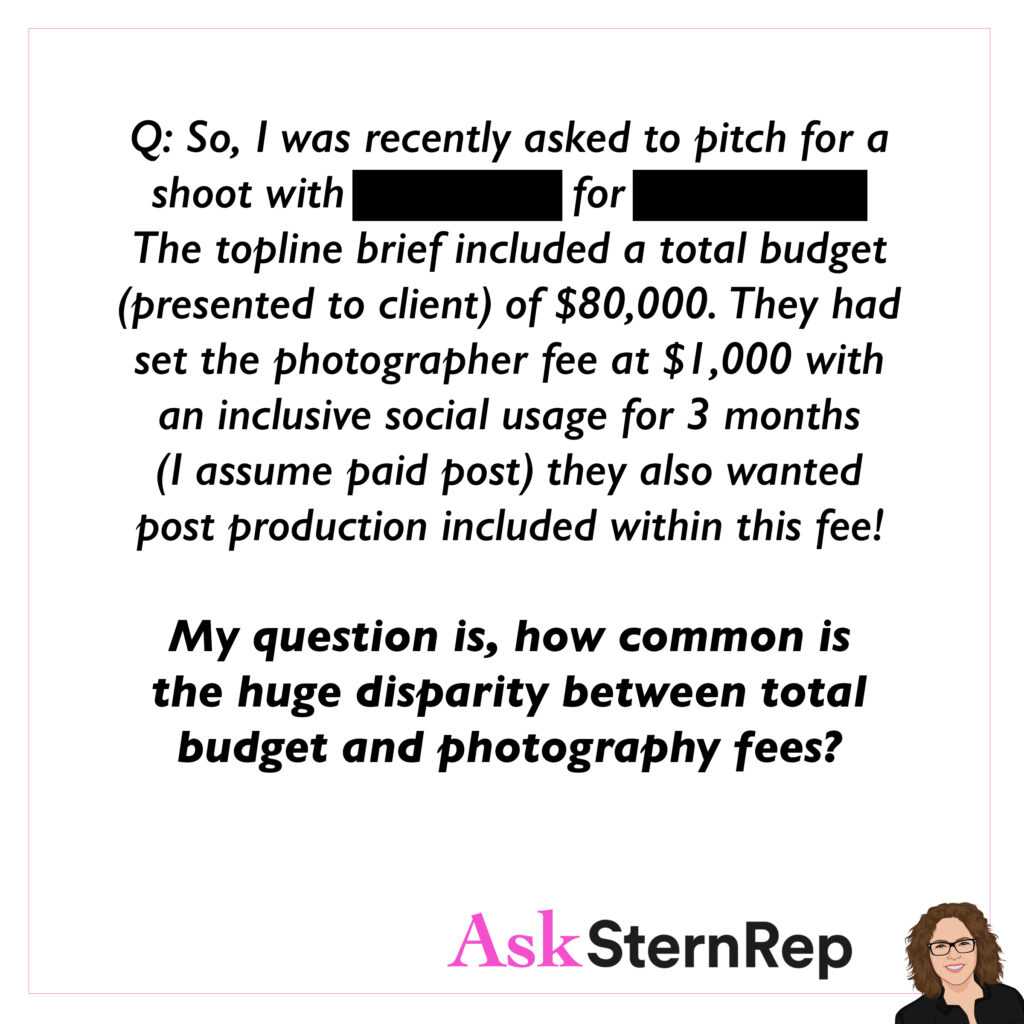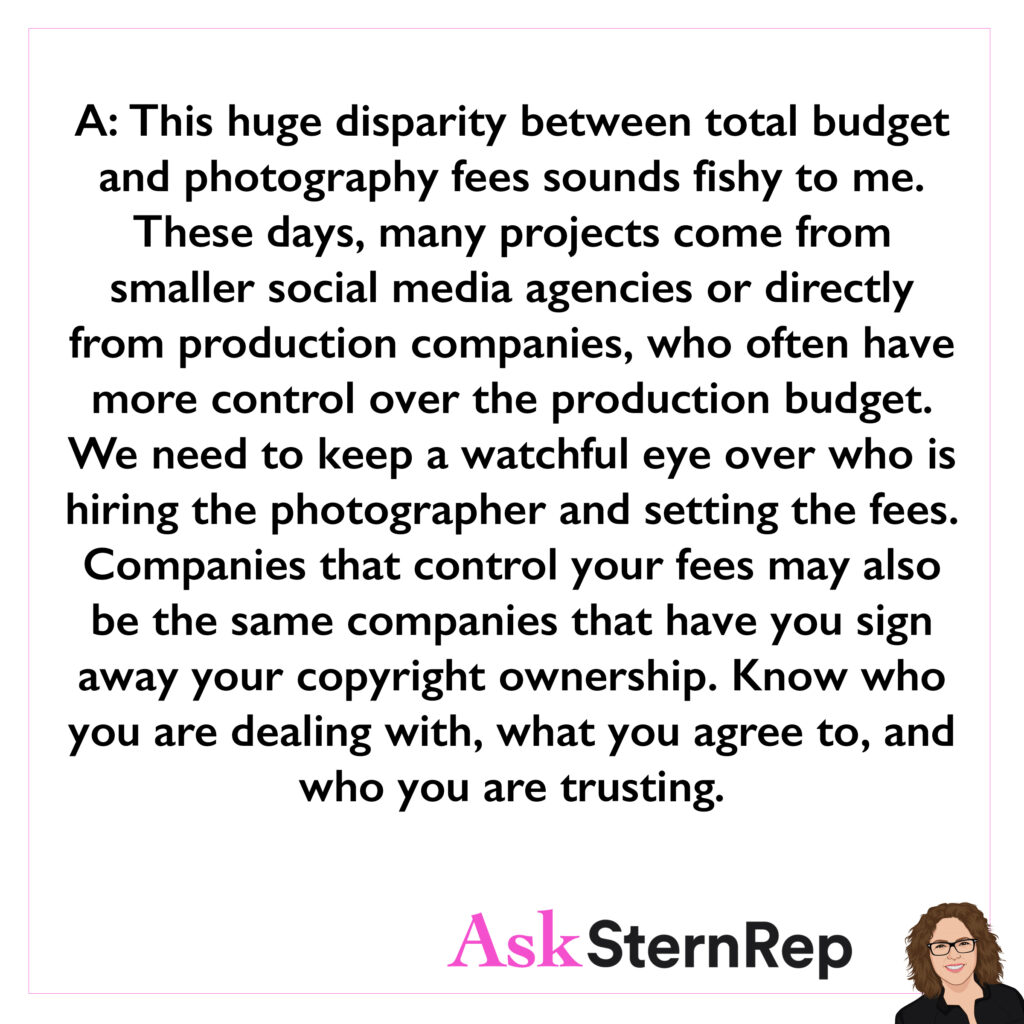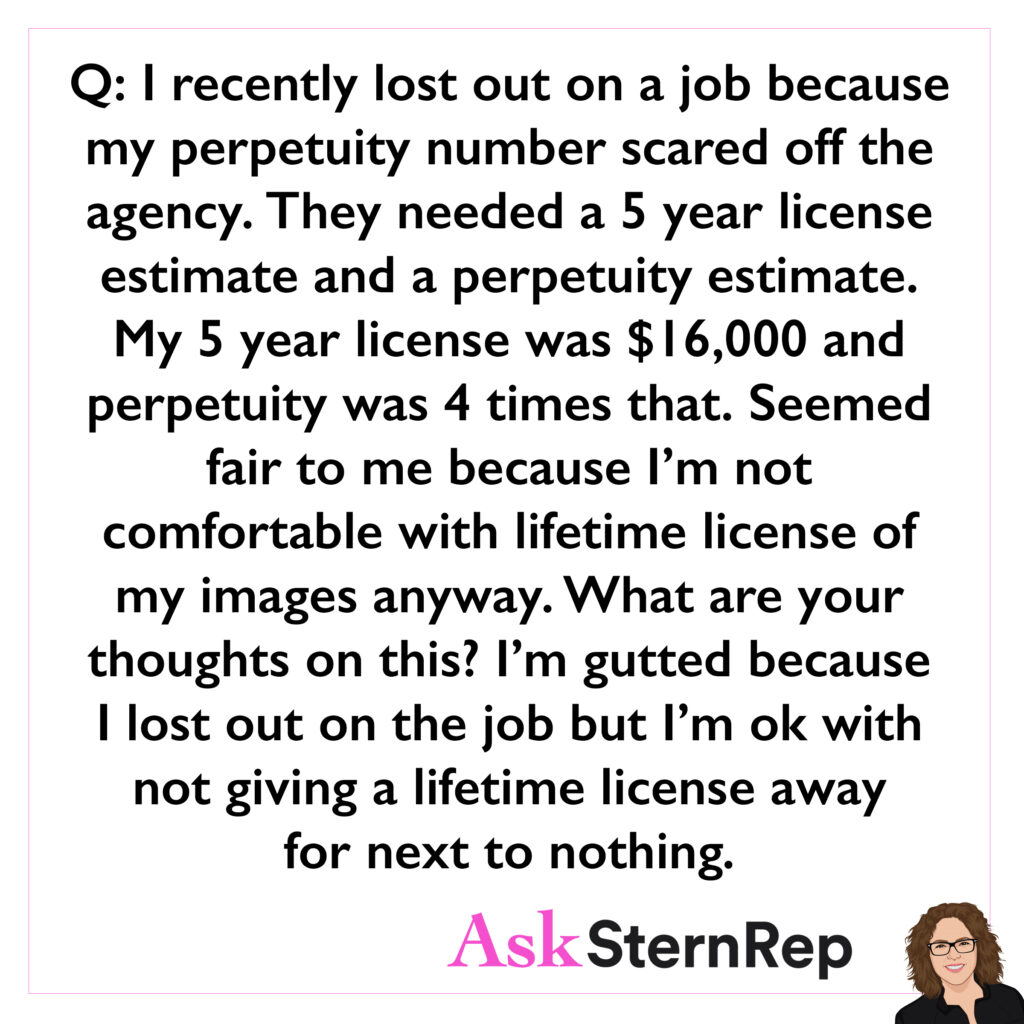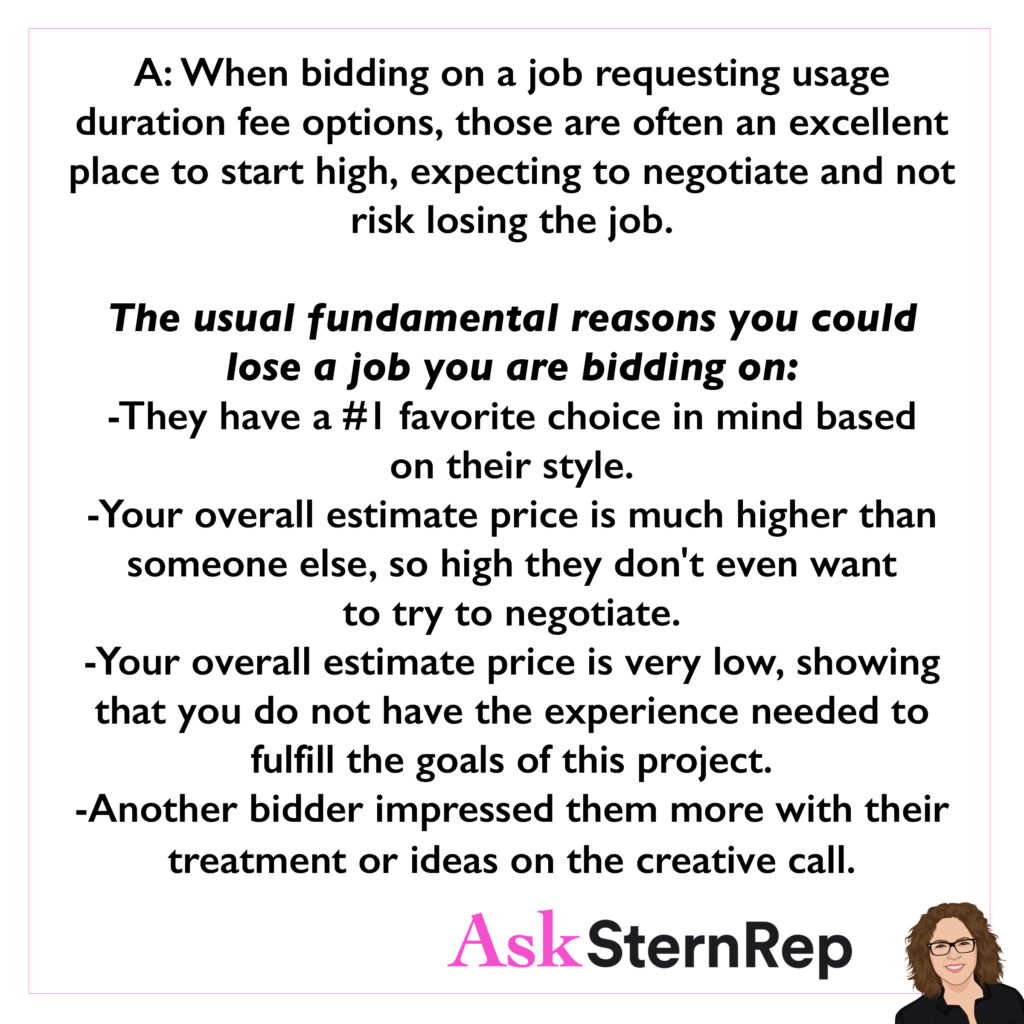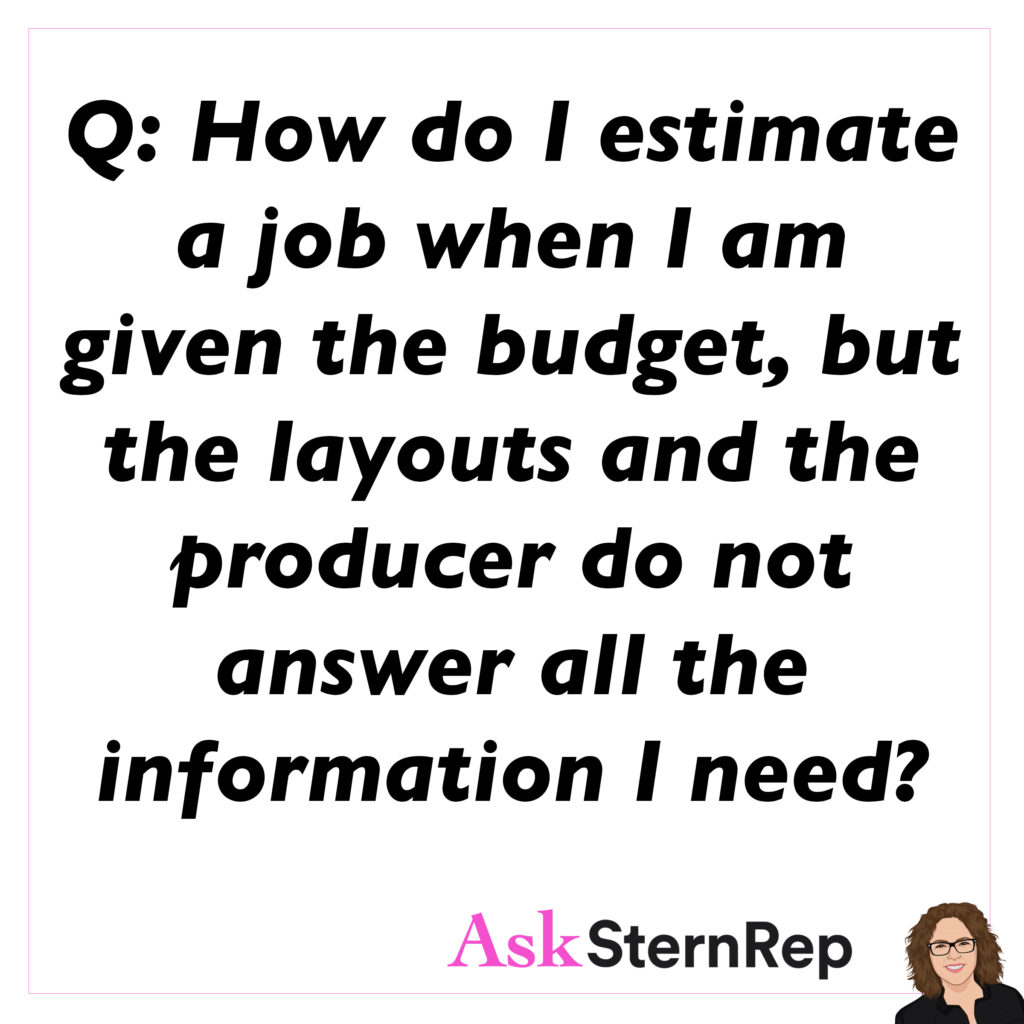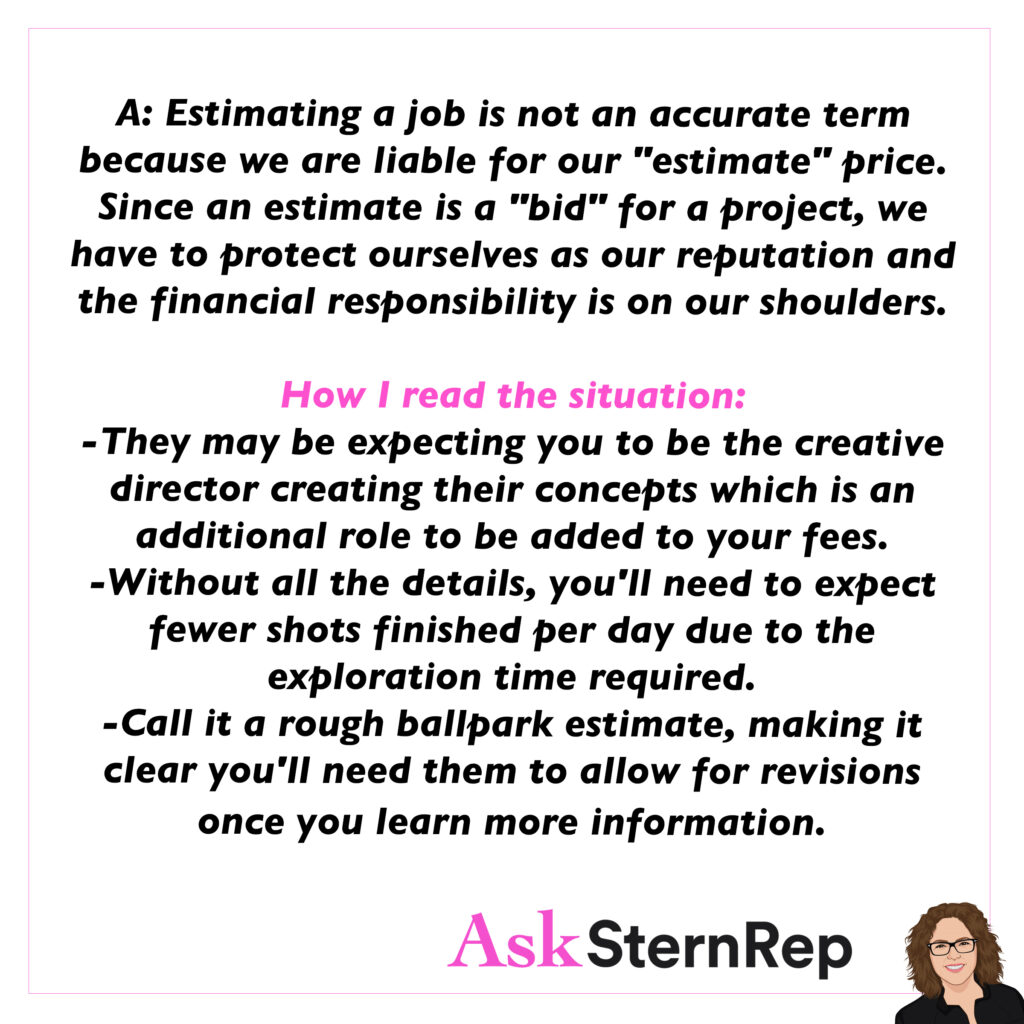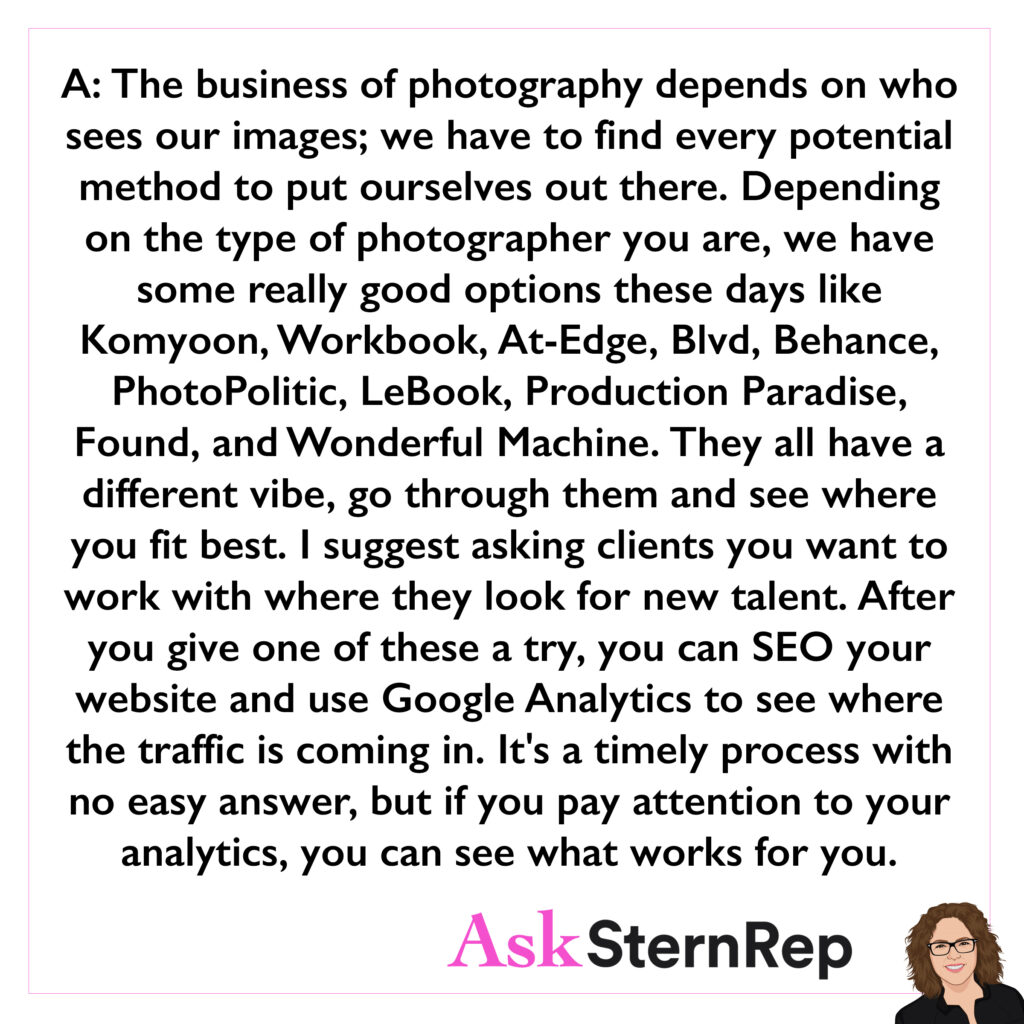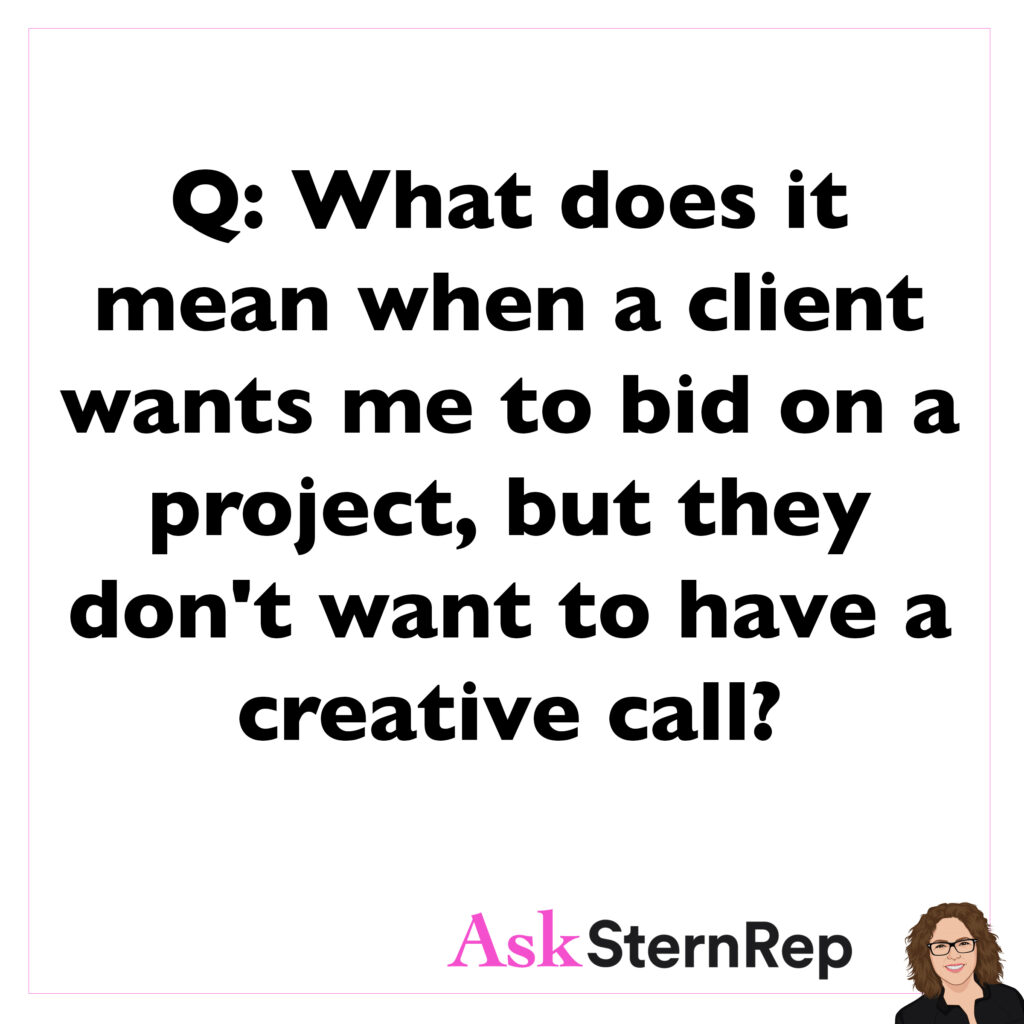

Q:
What does it mean when a client wants me to bid on a project, but they don’t want to have a creative call?
A:
If clients don’t want a creative call, that may be a sign for us to read into how they are not taking this as seriously as we’d like. It is time for the photographer to share their vision and approach, introducing the director who you will be on set. I read into them skipping this stage in a couple of ways: You may be the 3rd bidder and not be high on their list for this project so you should kick butt on your treatment as that can serve as your intro to the creatives and the client. Your estimate should be as ethically conservative as safely possible to entice the client to choose you but remember you could get locked into these prices in the future. This project may not be happening yet, and they needed your numbers to provide the client with a preliminary budget range.

